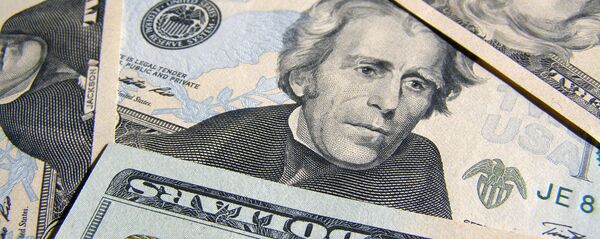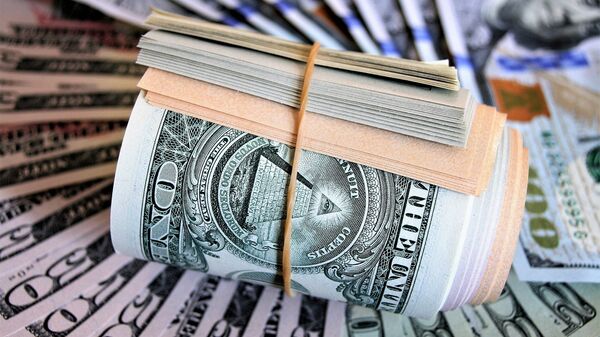The Wall Street Journal has cited the US Congressional Budget Office (CBO) as saying that the country's federal debt has already reached its highest level since World War II and is currently equal to the size of the nation's economy.
CBO suggested that the debt may exceed 100 percent of US gross domestic product (GDP) in the next fiscal year which kicks off on 1 October, due to a hefty financial response to the COVID-19 pandemic.
Joseph Gagnon, a senior fellow at the Peterson Institute for International Economics and a former visiting associate director of the Division of Monetary Affairs at the US Federal Reserve Board, said that the pandemic has led to a situation when "there is a large increase in government debt in most countries this year".
"Tax revenues fall as businesses close or shrink and the government spends more to subsidise workers and firms. In the US, the Trump tax cut of 2018 already increased the deficit somewhat before the pandemic struck", Gagnon noted.
Michael Pento, president and founder of Pento Portfolio Strategies, for his part, recalled that America's national debt to GDP ratio has skyrocketed to 136%, its highest since WWII.
He said that "another way of looking at the US debt is that it has now soared to reach an incredible nearly 1,000% of annual federal revenue", with the fiscal deficit for 2020 due to stand at $3.3 trillion, which Pento said makes the situation "even worse".
"Therefore, not only is the shrinking amount of revenue being dwarfed by the tremendous of amount of debt; but the government is adding to this debt at a rate that is equal to 17% of GDP per annum. In other words, the notion that this debt can ever be paid back is ridiculous", Pento asserted.
"[…] Even in what some have recently characterised as 'the greatest economy in history' deficits were rising at a trillion-dollar-rate before the [outbreak of the] virus. The real problem is fiscal and monetary madness in D.C., which has been adopted in order to perpetually pump up asset bubbles", he claimed.
Pento was echoed by Brian Riedl, a senior fellow at the conservative Manhattan Institute for Policy Research, who underscored that America's national debt, which amounted to $17 trillion in early 2020, "is projected to soar to a staggering $33 trillion by the end of the decade".
Riedl said that "with foreign debt purchases relatively stagnant for the past decade, it is unclear how domestic savings will finance this unprecedented surge in federal borrowing".
US 'Trillion-Dollar Deficits Here to Stay'
He predicted that "overall, the [COVID-19] pandemic is expected to add $2.1 trillion to the [US] debt over the next decade, as much of the new spending and revenue losses are offset by the savings of lower interest rates on the debt […]".
The pundit said that although the pandemic and subsequent recession will finally end, it appears that "trillion-dollar deficits are here to stay".
According to him, "the danger is that – at debt levels of $33 trillion – each 1-percentage-point rise in the average interest rate paid by Washington will cost $300 billion in annual interest costs". Riedl referred to what he described as "Washington's insatiable borrowing needs", which he said would "crowd out other investments and harm growth".

The comments followed US Department of the Treasury data in June indicating that the country's national debt had exceeded $26 trillion for the first time in history, as the nation grapples with economic fallout from the novel coronavirus pandemic.
The US government has provided up to $5 trillion in coronavirus bailout funds since March 2020. The Coronavirus Aid, Relief and Economic Security (CARES) Act was passed on 27 March and included $2 trillion, while the $3-trillion Health and Economic Recovery Omnibus Emergency Solutions (HEROES) Act was adopted in May.






